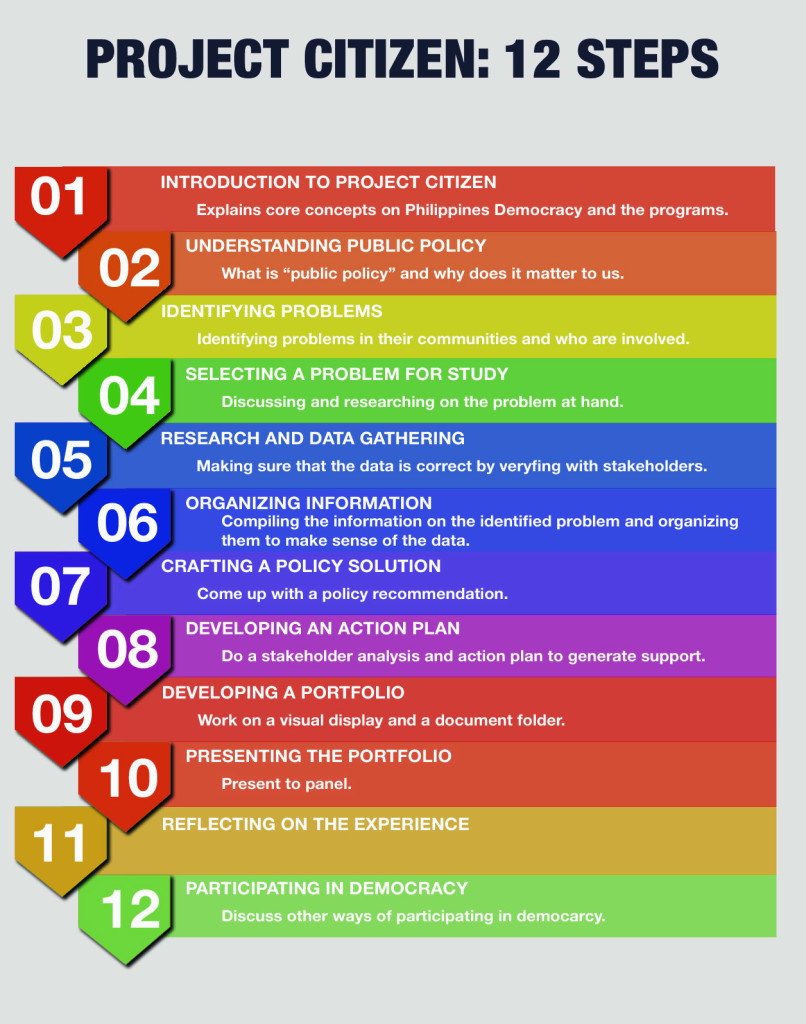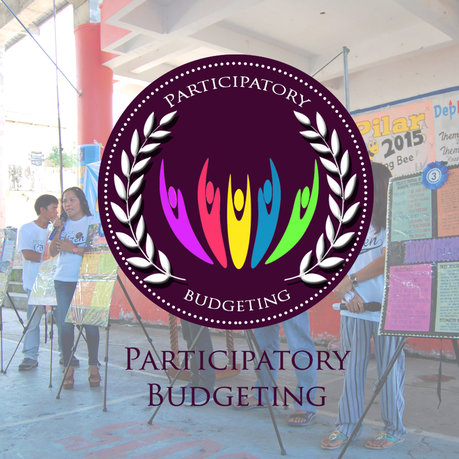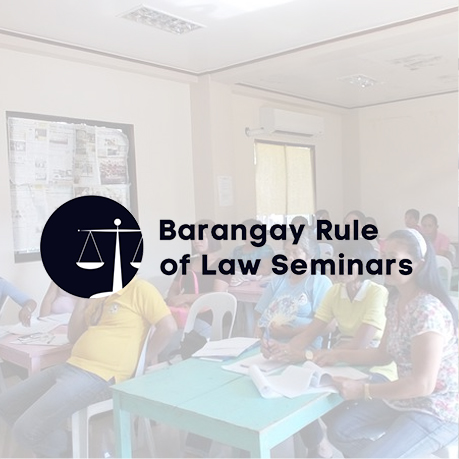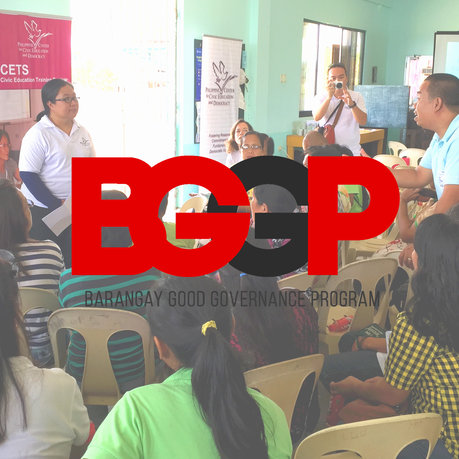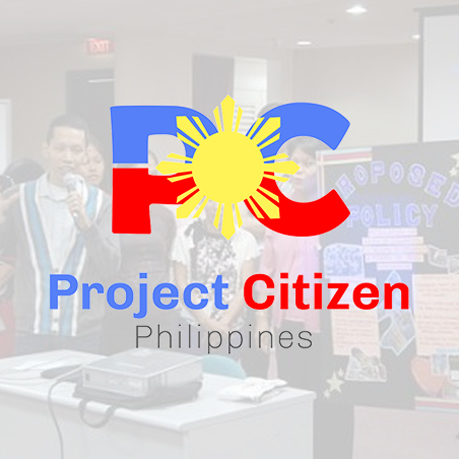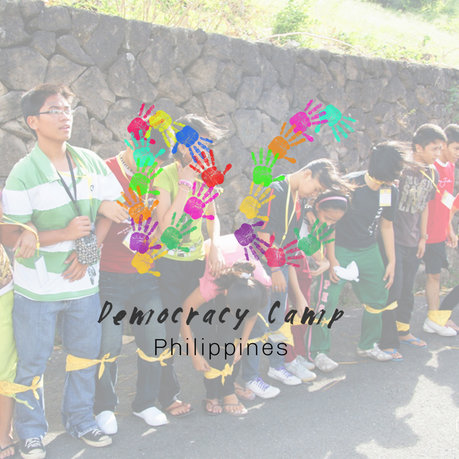Project Citizen Philippines
PROJECT CITIZEN teaches young people how democracy actually works. It provides a practical, first-hand approach to learning about the complex system of government and how to monitor and influence it. Students work together with other students in the group to conduct research in their community to discover problems that they think the government is not handling at all, or not handling well. It is therefore an effective approach for education in democracy. PC trains high school students in seeking public policy interventions to solve community problems.
It is an international program for increasing the democratic participation, political efficacy, and civic engagement levels of students at the middle and high school levels, and currently, there are more than 60 countries that are using the program. It is an approach that involves training the teachermoderators in embedding education for democracy in the classroom, while simultaneously providing a venue for students to participate in community problem-solving and applying their lessons in citizenship in real life. In the past years, the program has reached around 3200 students from all over the country.
The project starts with a teacher training program that targets social studies teachers who will be moderating the student team. The training program includes modules about civic education, policy-making in the Philippine context, Project Citizen as pedagogy, and finally a hands-on session on the steps in Project Citizen.
The teachers then are expected to go back to their respective schools and organize a class of participants. Under the guidance of the teacher, students will work together with other students in their class to conduct research in a particular community in order to discover problems that they think their governments are not handling at all or not handling well. Then they will select a problem from among those they have identified and work cooperatively to conduct research on the problem. Students go inside their chosen community and look into the different sides surrounding the issue chosen. They will have to interview the community officials, community members and other key people to get a grasp of the problem at hand.
One of the student-teams' research portfolios tackled bullying #projectcitizen pic.twitter.com/UBDDI46s
— PH Civic Education (@pcced) February 7, 2012
The students then identify alternative solutions to the problem. They approach various institutions that can help them come up with ideas for the solutions. These institutions include government agencies, research and advocacy groups, civil society groups, etc. they then compare the different solutions that they can come up with and weigh their advantages and disadvantages. They choose a solution that they feel best provides response to the issue. The proposed solution to the problem must require governmental action and it must not violate provisions of the Constitution.
Finally, the students propose an action plan to influence the appropriate governmental agencies to consider or adopt their solution to the problem. This usually includes possible supporters and non-supporters of the proposed solution and a detailed plan on how to influence the stakeholders to adopt the solution.
This is the 7th year of Project Citizen. This year 7 areas from all over the Philippines compete. pic.twitter.com/4QxgQ0z5vX
— PH Civic Education (@pcced) April 5, 2014
Once these tasks are completed, students will record the results of their work on a portfolio and in a documentation binder. The portfolio is an organized collection of information that made up the group’s plan. It is usually composed of four big panels that discuss (1) the problem; (2) alternative policies; (3) class policy; and (4) action plan. Then they will take part in a simulated public hearing in which they will present the results of their work to a panel of public and/or private sphere representatives of the community. In these hearings, students will be questioned on how well they did their research on the community and problem and the solution. The panel will also have the opportunity to give feedback to the students.
Ganito ka ba nung high school ka? A student fr Tanauan defends a policy proposal in public. #projectcitizenph pic.twitter.com/MezFqe5uWh
— PH Civic Education (@pcced) April 5, 2014
The program will close in a showcase where all participating classes will get to display their portfolio in an exhibit. This showcase will be a venue where students form different schools will get to interact with various community leaders (e.g. Department of Education superintendents, local government leaders) and talk about their experiences under the program. Special awards will also be given to recognize exemplary research, portfolios, and presentations.
LEARNING BY DOING
By taking part in Project Citizen, students will learn by doing the work of active citizens in their community. By completing their tasks, they should learn:
- which branches, agencies, and levels of government have the authority and responsibility to deal with the problem they have chosen to tackle
- about the existence and roles of “civil society” (the sphere of voluntary activity in society) in the political process
- how to monitor and influence the political process in their community, city, or the whole country





